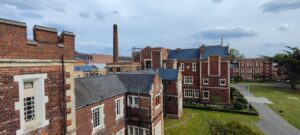Abandoned Wiltshire: Hare Warren WWII Super Zero Station | Urbex

Imagine you were tasked with finding an underground bunker in the middle of the woods, a bunker which, until recent times, had barely any information regarding its existence. Now imagine two fully grown men, carefully walking around the woods, looking closely at the floor like one of them had dropped something, retracing their steps trying to find it…
Today, we were looking for an underground bunker in the woods of Hare Warren.
History of the WWII Super Zero Station
According to Historic England, this specific bunker was constructed in 1943/44, as a result of an order from Churchill in 1940 to form the ‘GHQ Auxiliary Units’, sometimes called the ‘British Resistance Organisation’. This unit stood ready, preparing the entire UK for the nightmarish possibility that Germany would invade and completely takeover the country. The unit trained civilians to become spies and set up a communications network to receive up-to-date information on what the Germans were doing.
The Historic England page details how this fantastic spy network operated, but this specific bunker was one of the military operated posts, specifically called a ‘Zero Station’. Information from multiple spies across the country was sent to, gathered and transmitted at this station.
According to one personal journal, thought to reference this bunker at Hare Warren: ‘This station could accommodate 8 or 9 operators (compared to the standard 3).’ According to the Historic England listing of the bunker: ‘this is the only known control station of its type, in terms of scale, plan and operational capacity.” Due to the nature of the information passing through this station and that the station and its officers would be critical for fighting back against the Germans in the event of invasion, the bunker was completely buried underground and the entrances made to be difficult to locate. It’s also noted that very little information about this bunker and the specific details of the spy network exists due to the secrecy of this network.
So now go back to imagining us two guys, stumbling around the woods, looking for the bunker entrance, specifically: a bunker made to be difficult to find. Now you have an idea of the monumental task we faced: finding this thing...
Finding the Bunker
After stumbling around a little longer, we found an arrow sprayed onto a tree, a former urban explorer helping those after them find the hidden site. We continued forward, following the arrows that led us to the entrance: a concrete block in the floor with a rusted grate covering the way in. Nearby, a circular hole, less than a metre in diameter, sank into a deep dark pit in the ground. The only thing stopping us going down this hole was another metal grate cover, secured down into the dirt by concrete. I looked down through the grate into the pit: Rotted wood, litter, rusted steel and sharp splinters all stuck upwards. I wasn’t sure what I was looking at, but it wouldn’t be long until I found out.
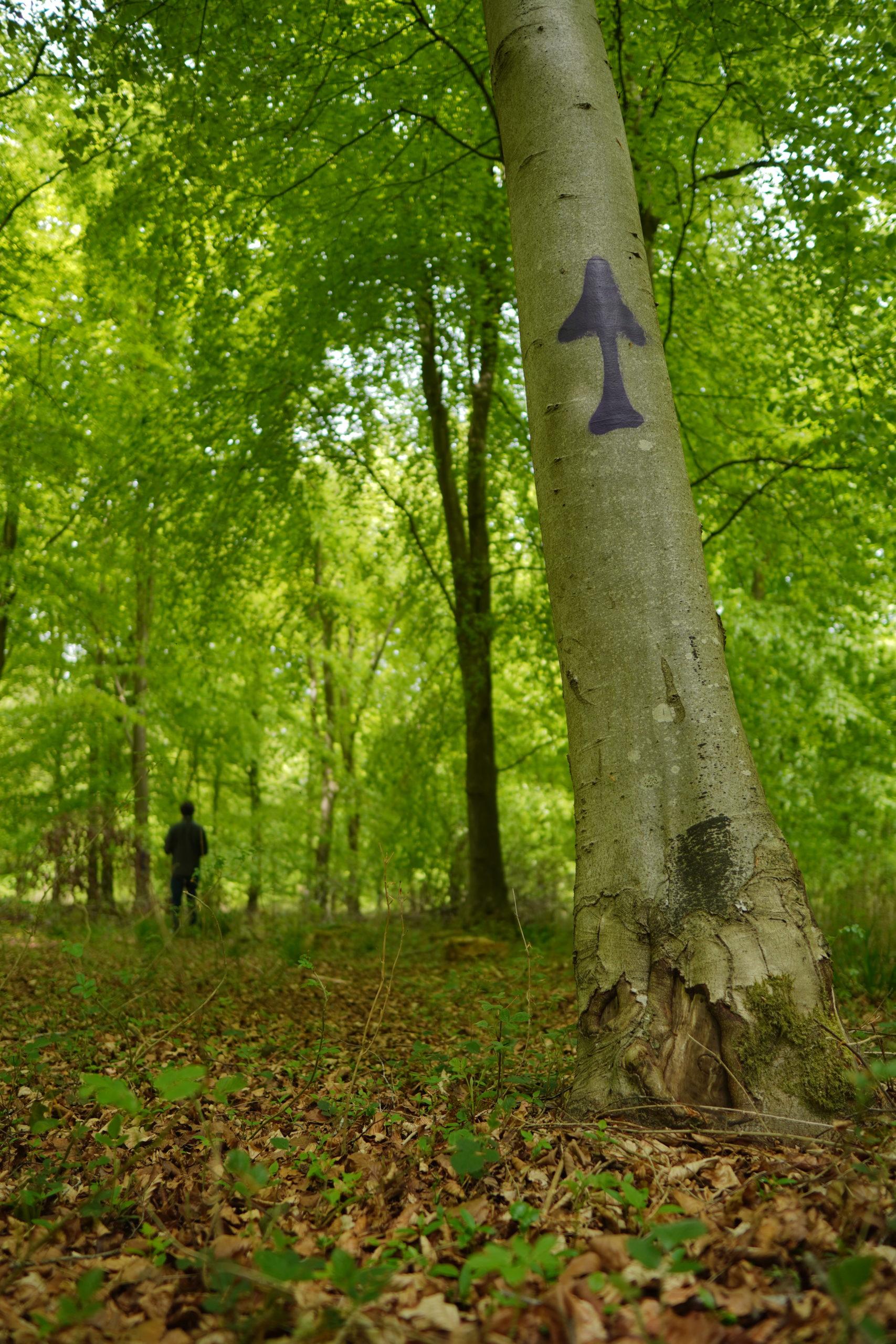

Upon looking down at the tiny bunker entrance, I thought this place would be tiny. The entrance was barely big enough for one of us to fit. Nonetheless, we lowered ourselves one by one into the hole. Immediately below the entrance in the ground lay a few long pieces of timber which we used as support as we lowered ourselves in.
Inside Hare Warren Bunker
Once on the floor, we shuffled down a small corridor and entered a room which was taken up mostly by wood. The roof was supported by large timber beams which stood central to the room. According to old reports, this used to be a blast door, however prolonged lack of care and maintenance meant it had started to rot and crumble.
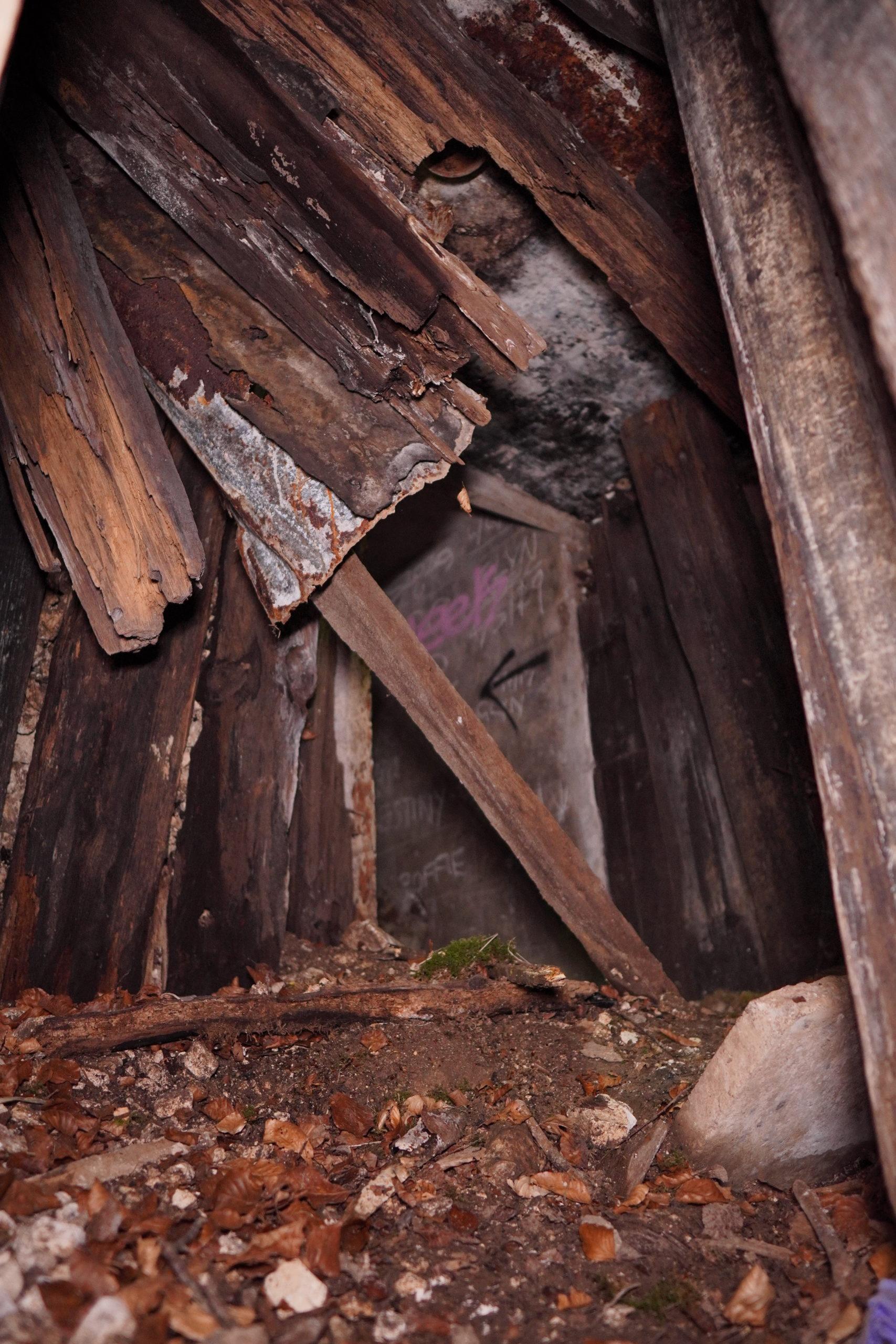
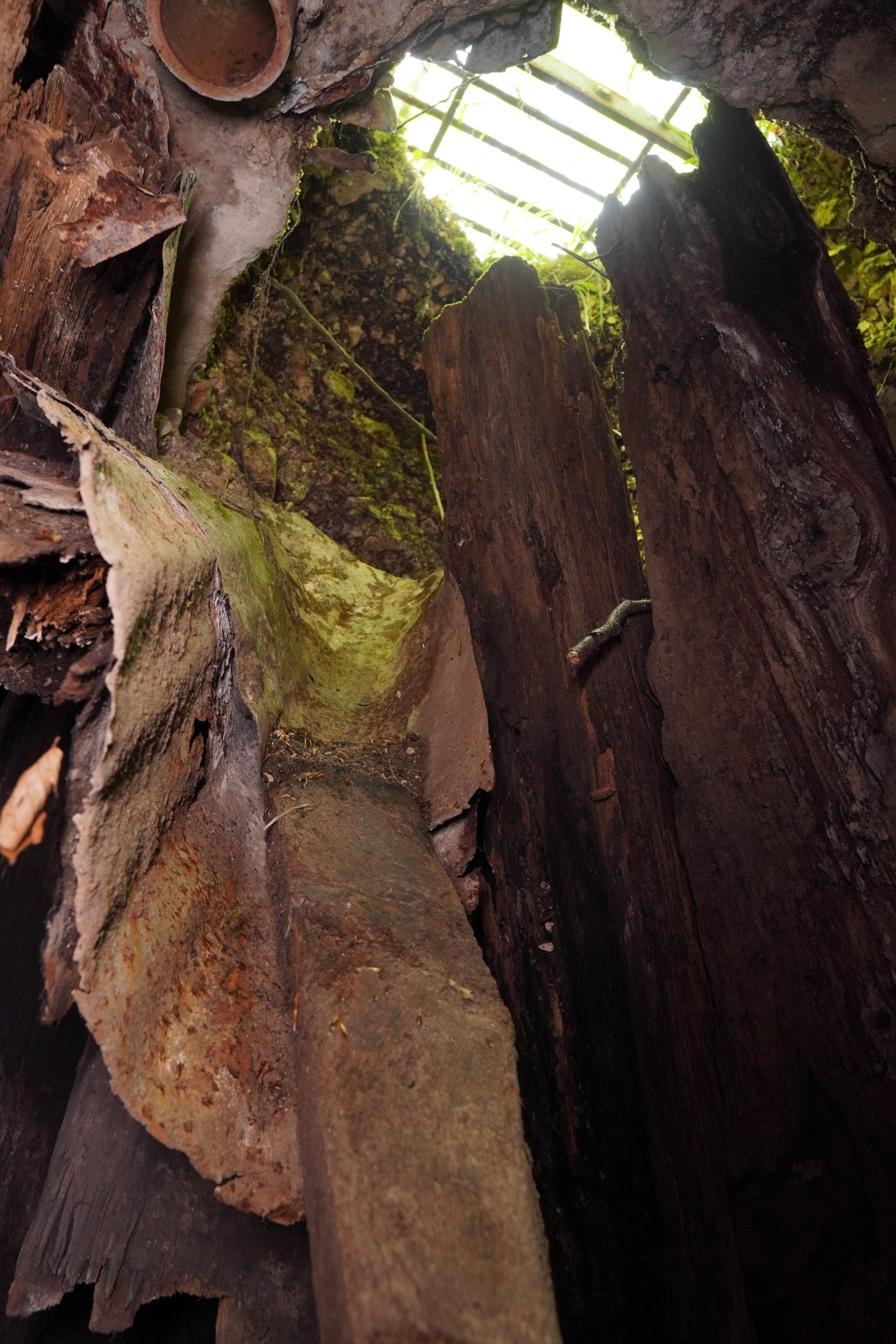
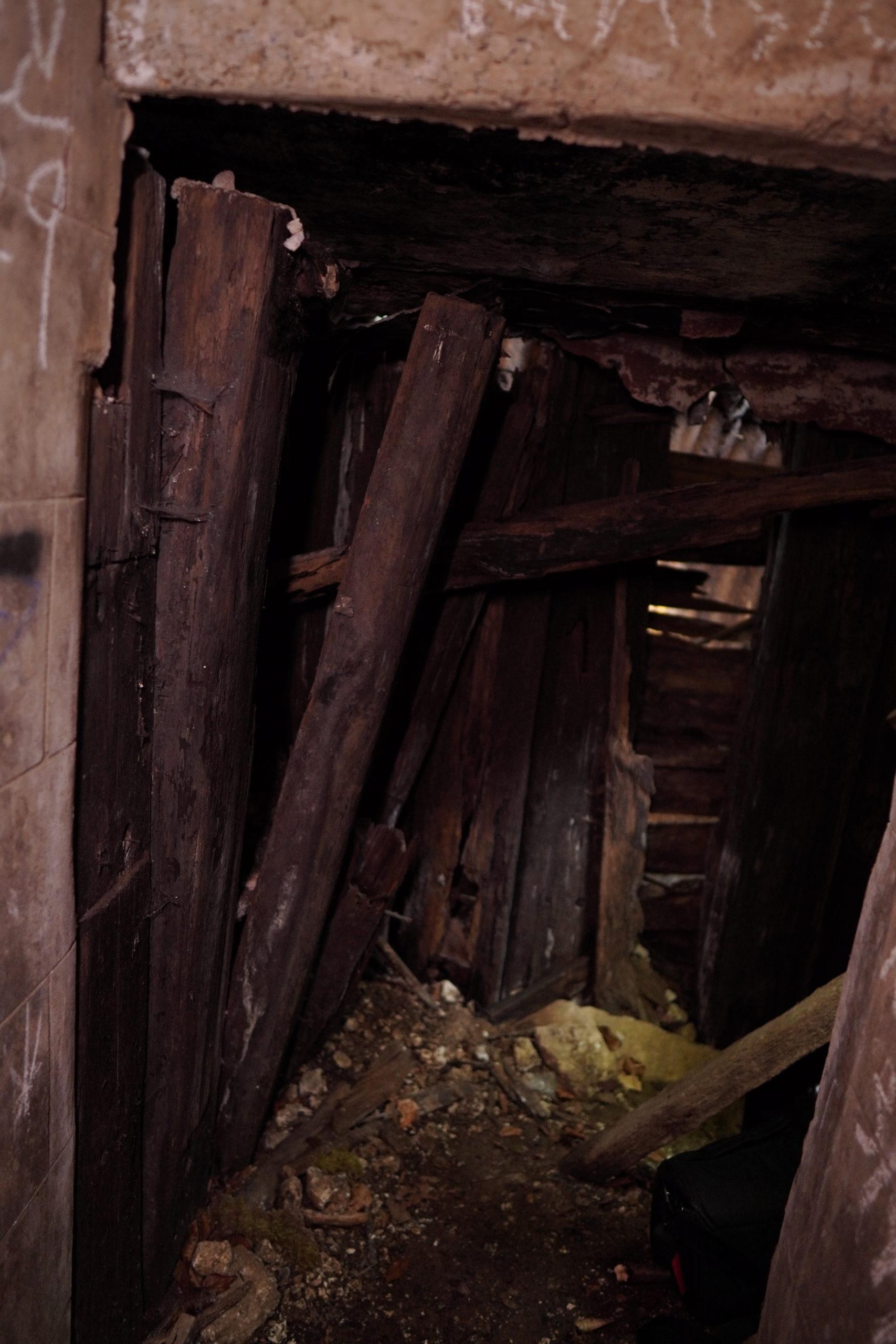
The corner of the room had collapsed inwards, allowing sunlight to spill into the underground bunker. I looked up and saw the grate I had looked down earlier. A theory floated on Historic England is that this hole was formed by a collapse inadvertently caused by someone falling through the bunker roof. I hope that wasn’t the case, the jagged edges of rusted metal and rotted wood wouldn’t have made for a soft landing. Fortunately, no other evidence of someone falling down is clear and it only remains a theory.
Moving into the next room, there is a stark difference in deterioration. From here, the bunker is in good condition, as the rest of the structure had no direct exposure to the elements, with the only signs of wear being a rusted roof. On the left side of the cylindrical room, a cage on the floor marks where the first bunk would have been. On the other side of the room, a pile of timber shows where the bunk was before it had collapsed. A small desk at the end of the room on the left is what would have been a galley, or kitchen. I wondered at the moment if one officer would’ve been designated chef, or if everyone cooked for themselves.


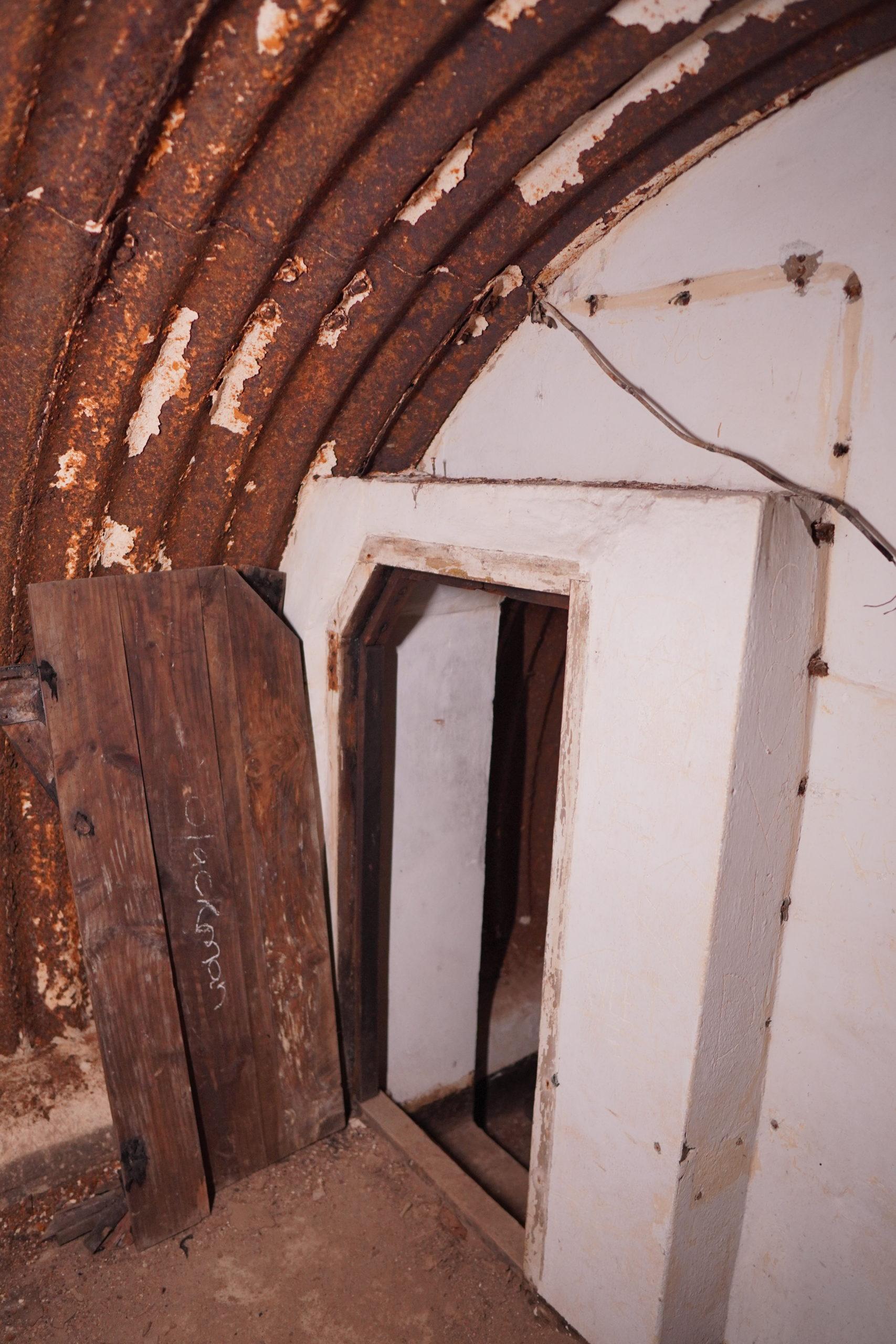
Moving onto the next room is where all the officer would have worked. Three workstations, side by side, all very deteriorated but very clearly visible, sit rotting away. On the opposite side of the room to these desks is a small broom cupboard, but we’ll comeback to that in a moment.



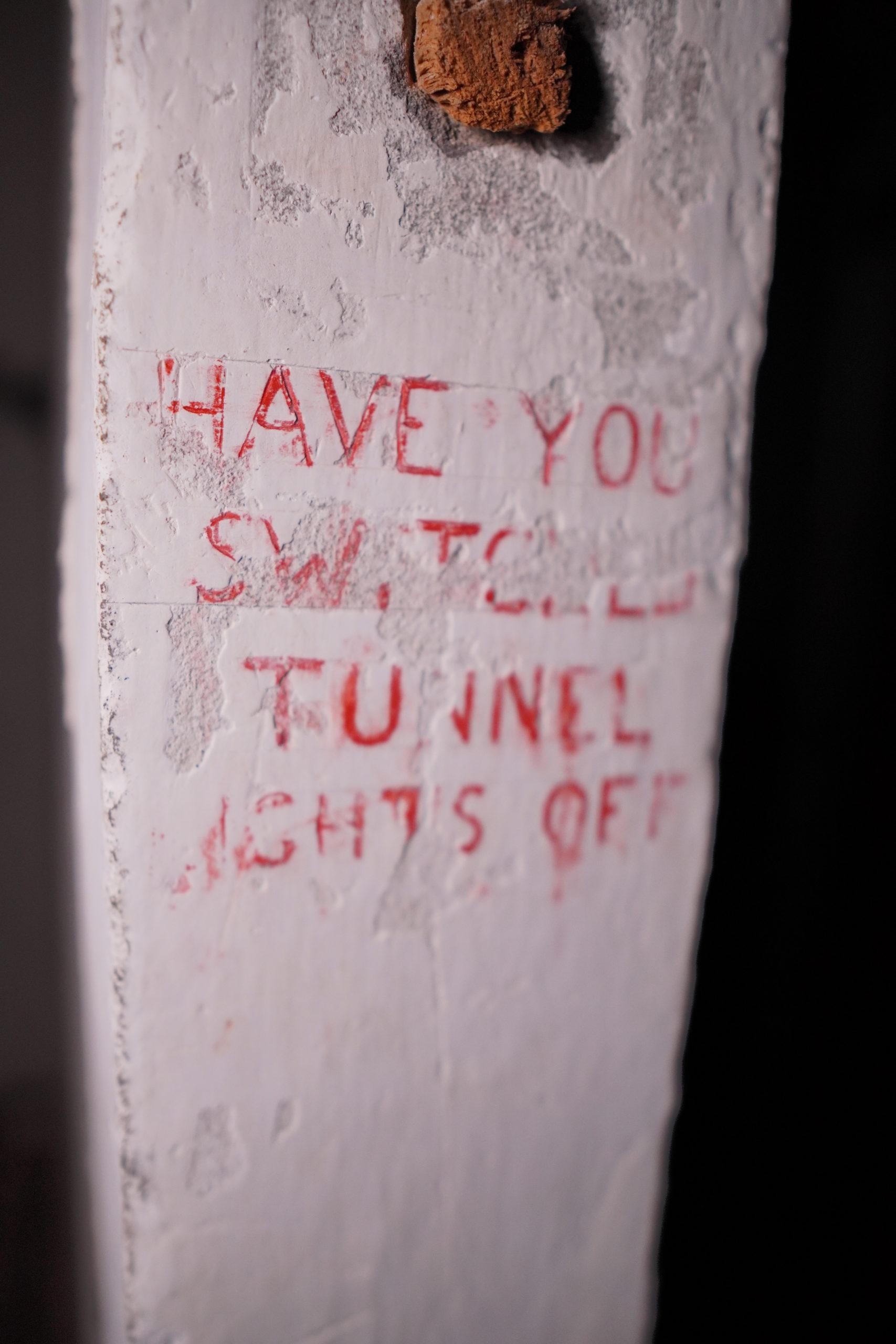
Moving further into the bunker, we come to the furthest room, easily the smallest room: a generator room. Here, a couple of generators would have powered the entire bunker and pulled in fresh air from above.

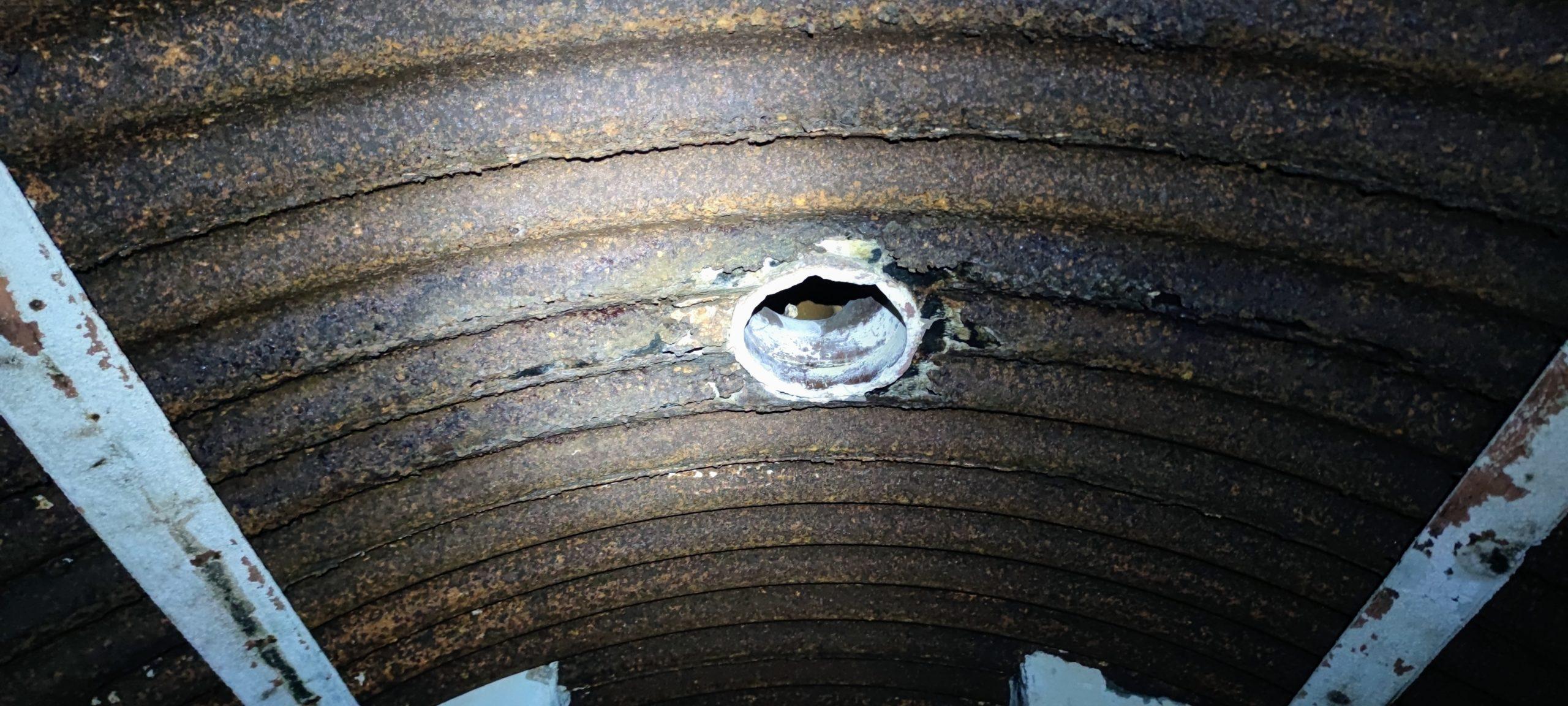
The Escape Tunnel
Next, moving back to the broom cupboard, I poked my head in, expecting to see nothing more than a storage cupboard. But it was so much more. On the left side, there was no wall, it was a huge gaping circular hole that led straight out into darkness, even when shining my light down it. I was amazed, I felt the urge to crawl down it and see what was at the other end…

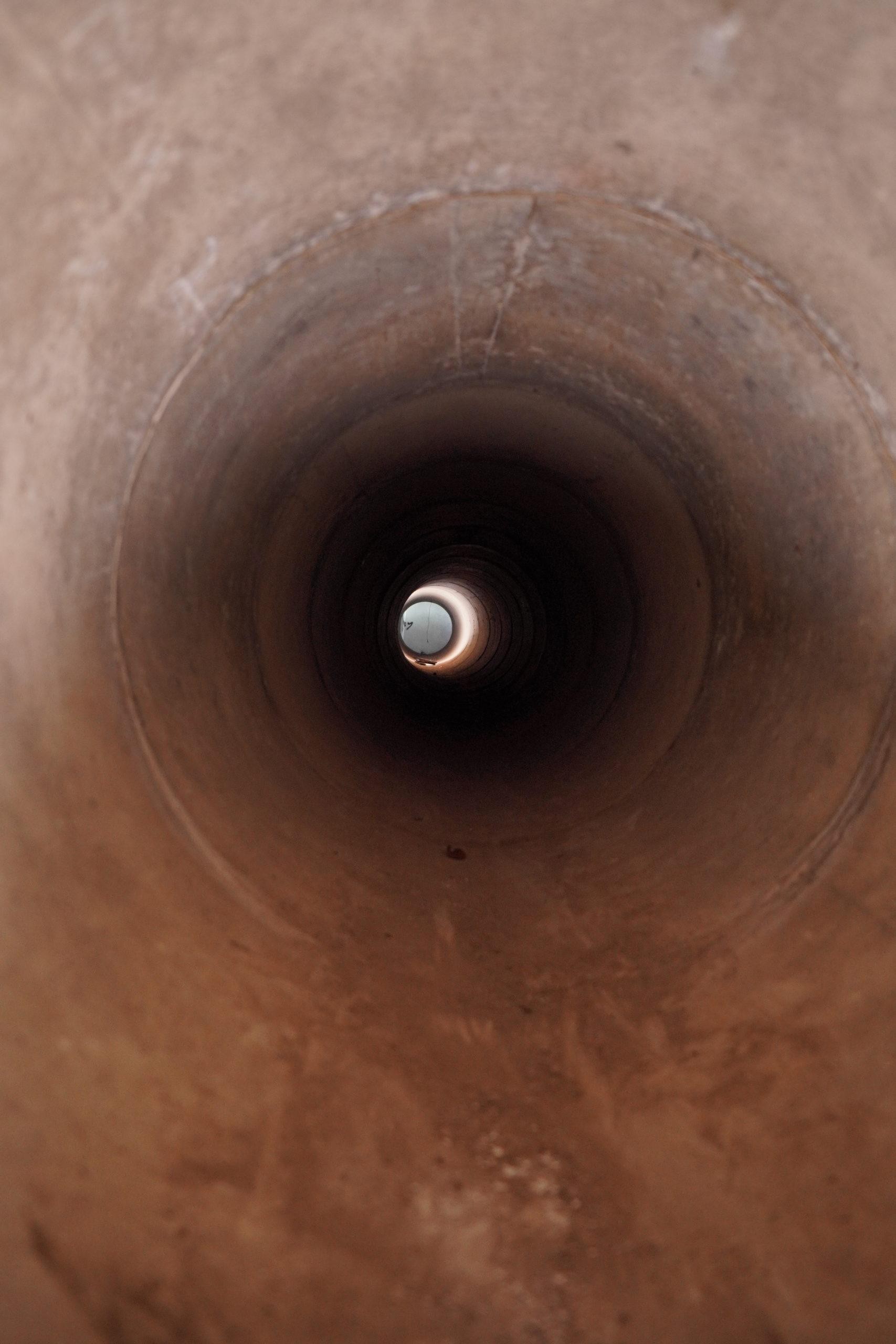


A few moments later, I was cautiously crawling down this concrete tunnel, not sure how far it led me away from the bunker, or where it led to. It was ominous and spooky. All the stuff Urban exploring is about!
I reached the end after a minute or so, it was a small box I could crawl into. This box was about a metre high and two by two metres across. This box was a junction, as the tunnel turned ninety degrees to the right and kept going. Down that tunnel, I could clearly see the end a few metres away and daylight. I crawled to the light and saw another grate covering the top of the hole. This used to be an emergency exit in the event of the bunker being discovered.
Satisfied we’d seen everything, we climbed back out. We then searched above ground for the emergency exit cover and found it shortly afterwards, further away from the entrance than I had expected. The grate was welded shut, there was no way anyone would be escaping through that anytime soon.
Hare Warren Bunker Today
Upon the end of the war, the bunker was abandoned and the entrance covered in concrete. A nearby hut, the only clue to the bunker nearby, was demolished shortly afterwards. Before long, the bunker faded into oblivion, until, I assume, one day it was rediscovered and gained its listing with Historic England. While I’m glad it has received a protected status as a scheduled monument, by doing so, Historic England may also have doomed the bunker to its fate.
The bunker lies on the land of the Wilton House Estate, who appear to have little to no interest in the bunker itself. If they did, there may be more protection of the site going on, but alas, there is not. Without proper investment and officially approved restoration going into the bunker, something that will be extremely difficult considering the building is in the ground with no easy access, it is likely this bunker will, yet again, fade into history. Only this time, collapsing in on itself until there is little to nothing left except a twisted pile of metal, wood and concrete, buried 10ft below ground…
Last Updated on 19 December 2024 by Michael




